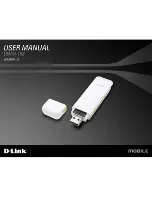
51.0077.0004.01 Rev.03
FP wMBusConf - Operating Manual
7
Operating Manual
Installation and start-up
Guide the cable to the M-bus master through one of the self-sealing cable feedthrough membranes in
the housing. You can connect a transmission cable to the next M-bus participant to the second M-bus
terminal.
You can use a small screwdriver to push through the membranes for flexible lines. In order to
guarantee protection class IP65, the opening must be significantly smaller than the cable’s outer
diameter. If you remove the plug-in terminals and guide the corresponding cable sufficiently through
the membrane, you can establish the connection conveniently outside the housing. Then pull the
cable back and plug the terminals into the corresponding strips on the circuit board.
ATTENTION
Ensure that the cables are not laid at the top left close to the antenna, as this could have a
negative effect on the radio signals.
Tension is relieved by looping the cable ties provided around the cable.
Once you have completed all assembly and parameter setting work, secure the device with an
adhesive seal on the housing cover’s screws to protect against manipulation.
2.2
Setting parameters and starting up
The wireless M-bus adapter’s parameters are set using the free Windows software wMBusConf, that is
available on the USB stick provided or on our website at
. To communicate with
the PC, you can either use the USB interface with a mini USB cable or use the M-bus interface directly
via a level converter.
Configuration is described in detail in the special manual for the wMBusConf software (see section
4.6).
ATTENTION
Note that the wireless M-bus adapter cannot be used until parameters have been set.

































